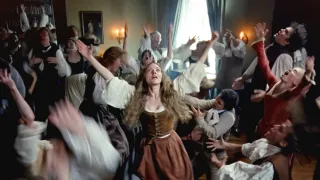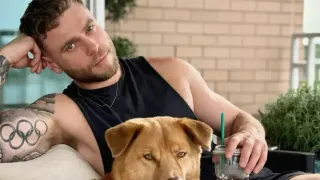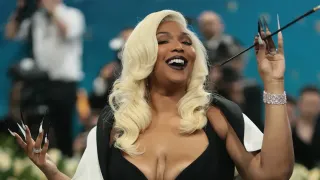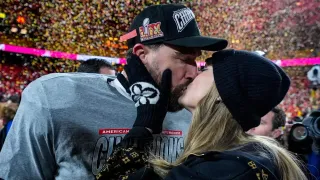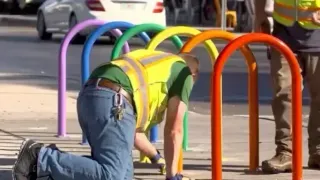June 9, 2023
Boston Pride Is Back, But with a Difference
Emell Adolphus READ TIME: 5 MIN.
When the Boston Pride Parade & Festival returns this Saturday, June 10, after a three-year hiatus, LGBTQ Bostonians won't have to wonder about what makes this year's celebration different from all the others. The short answer is: everything and nothing at all, according to the parade's new organizers, Boston Pride for the People.
At its roots, Pride parades have always been community-centered events, explained Jo Trigilio (they/them), vice president of Boston Pride for the People. After the parade's previous organizers, Boston Pride, disbanded in 2021 after accusations of racism and excluding transgender people and other organizations, Boston Pride started "from scratch," said Trigilio. Rebuilding the event from the ground up through much-needed community feedback and collaboration, Boston Pride for the People hopes to re-center the parade on LGBTQ people over corporate sponsored partying.
"We really did pick that name because of that," said Trigilio about Boston Pride for the People. "We keep getting asked, 'How are you guys different?' We actually don't think of ourselves in those terms at all." Trigilio explained, "Pride belongs not to the organizer. it actually belongs to the community. So we started with a clean slate. Fresh."
At the center of all every discussion was how to be inclusive and serve all of the community's needs, said Trigilio. To answer that question, the BPFTP's board of directors held town hall and solicited feedback from local organizations to determine how they can best uplift their work as one of Boston's marquee public events.
"That's how we've been operating," said Trigilio, "we've been really community focused and doing a lot of listening and interacting."
Trigilio has been involved with the parade's previous organizers since 2017, serving as a communications volunteer to help with organizers with community feedback in 2019. But they have been involved with organizing since the 1990s, including helping to organize Boston's local Dyke March.
Pride serves many purposes, said Trigilio, with nuanced differences based on community needs. In Boston, the community need has been for pride to focus more on social justice issues.
"In terms of what's happening here, the idea that Pride had lost touch with parts of the LGBTQ community. People had been saying that for a good decade if not longer before all this happened–especially people of color and people who have just been disenfranchised," said Trigilio. "What happens then is that when you have a bunch of corporate sponsors, they are interested in the demographic that has money, and pride, unwittingly, becomes focused on those who have money. And those who are most disadvantaged, and their issues, are completely neglected. So that's something that has happened nationally, and we have within the last decade started to see a huge backlash."
Trigilio urged that corporate sponsors rainbow washing Pride parades is not a problem unique to Boston or any other community cause. "I think this is a problem that haunts a lot of nonprofit organizing on the left. These are larger, broader, political financial problems with how the left gets funded," they said.
In an effort to prioritize quality community partnerships over sponsorship quantity, Boston Pride for the People painstakingly researched its corporate partners to ensure that companies who claim to be allies are really allies.
"We want to make sure that corporations understand that the community does not want to be marketed to on the one hand and on the other hand have them supporting people who are working to harm us," said Boston Pride for the people co-chair Gary Daffin. "That is advocacy on our part," he said, explaining that they have encouraged other Pride supporters to hold their companies accountable to how they show their LGBTQ allyship. "It's still not ok to support people who want to harm us," he said.
In an effort to shorten the parade and focus on allies within certain organizations, Boston Pride for the People has capped the amount of parade participants to just under 10,000 and put a cap of 75 on corporate delegations so that those involved in LGBTQ-centered employee resource groups can be highlighted over brand names. Represented at the parade and festival will be more than 200 local and national organizations, from schools to churches.
The goal is a Pride parade for all, said Daffin. "We're not trying to create a pride that's for any specific group, and we want to make sure everybody feels at home at it."
About why such a focus on social issues and LGBTQ intersectionality couldn't be accomplished by the parade's previous organizers, Daffin didn't mince words. "Fundamentality, i think what happened is that change is hard for people and particularly people who have been around for a long time," he said. "The bottom line is they didn't want to change. We can talk about all the other stuff but they basically didn't want to change."
The Boston Pride for the People board is made up of 11 members and nine of them identify as persons of color. Three board members were previously involved with the parade's past organizers, explained Daffin. He added, "Did racism play a role in what was happening? Yes, it plays a role in everything that is happening in society. But I think they were not up for the challenge. (But) in the end change always wins."
Ushering in that change has been Boston Pride for the People president Adrianna Boulin. With a decorated background in public health and implementing systems to meet community needs, Boulin said her role as president of the organization has been "so much more" than she thought it would be.
"My mission is supporting people," said Boulin, who works at Fenway Health. She explained that her work centers on community needs. "And this is exactly what we are doing here in our work with Boston Pride for the People."
She added, "There are needs that our communities have. There is harm that has been caused in our community. And there is a voice and a platform (in the Boston Pride Parade) that our community needs to share their needs and further describe what their experiences have been. We all have so many skills that we bring to this."
The aim this year is to give parade and festival attendees a feeling of belonging to a community, "and community can mean so many different things and there are so many different communities in our LGBTQ community," Boulin. A taste of the festival spaces this year will be teen area, a family area and quiet area, a 21-and-over beer garden at Boston City Hall and a sober area at Boston Common.
"And i just feel like you can tap into something that is your jam at our festival and parade," said Boulin. "My hope is that people like its community centered and they can seem themselves in a space where they can celebrate pride in their own way."

